XT809 - The Greenhouse Effect does not exist
"XT809 - The Greenhouse Effect does not exist" is an extract from "EP301: Will Greenzilla Destroy the Earth?". This looks at various suggested mechanisms behind what is thought of as the "Greenhouse Effect", and shows that many are scientifically incorrect.
The mind-model of the Earth as a greenhouse just does not match up with the characteristics of an actual greenhouse, and even if such effects were active, they would make no difference to the Earth's heat balance.
Beginning somewhere around 1980, an amazing fallacy has overtaken the human race, easily the greatest in human history.
This fallacy is that the Earth is warming up because of increasing levels of carbon dioxide in the atmosphere, carbon dioxide due to man-made activity. Dubbed 'The Greenhouse Effect', a myth has been perpetuated of an all-devouring monster taking over the Earth's climate.
According to the current misconception, this is leading us to disaster, causing an unstoppable warming of the atmosphere, rising sea levels leading to drowning of low-lying countries, increasingly destructive cyclones and storms, a threat to the existence of polar bears, destruction of coral reefs, spread of tropical diseases into temperate areas, loss of native plant and animal species, and on and on and on.
This is not just an amusing myth to be smiled at occasionally. Governments and others are spending literally billions of dollars and years of research effort to appease the Greenzilla monster, money and effort totally wasted. Money and effort which could be used instead to genuinely benefit the planet.
What this is all about
This article examines the root mechanisms underlying the so-called Greenhouse Effect, and shows that this 'Effect' fails testing by simple laws of physics, and is a myth. It also demonstrates that Global Warming, a real occurrence in recent years, is just part of natural cycles and has nothing to do with levels of carbon dioxide or other 'Greenhouse Gases' in the atmosphere.
The 'Greenhouse Effect'
The idea behind the Greenhouse Effect is simple, even if its use as a model of factors in Earth's atmosphere is appallingly wrong.
In a conventional plant greenhouse, heat enters the greenhouse from the Sun's rays passing through the glass or plastic roof, or from a stove, or heated air pumped into the greenhouse. The heated air seeks to rise by simple thermal convection.
The hot air holds heat through motion of its molecules. This is quite different to the heat in incoming solar rays, which are infrared and light rays, forms of electromagnetic radiation. The hot air is physically restrained from rising by the roof of the greenhouse, and so the heat is kept in.
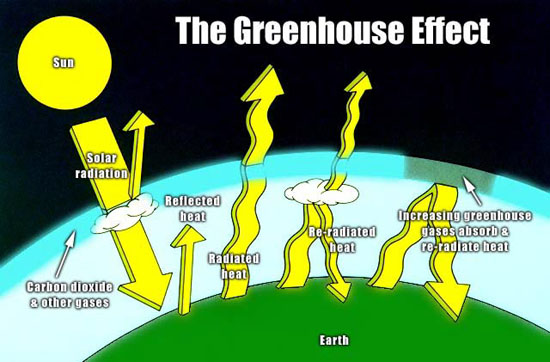
Figure 1. The Greenhouse Effect. From [2].
On the right of this illustration is a representation of how 'greenhouse gases' are supposed to enhance global warming. They are shown as accumulating in a layer towards the top of the atmosphere, where they 'reflect back' rising heat toward the surface.
Of course this is only a graphic representation of a supposed phenomenon, but it completely lacks any real physical basis. The 'greenhouse gases', in whatever form, are only gas molecules, and can't physically restrain rising hot air.
Nor can they 'reflect back' radiation. In the early days of the Greenhouse Effect fallacy, a physicist I knew slightly was promoting the idea. I phoned him up and asked how the Effect worked. He told me that the gas layer absorbed heat radiation coming up from the surface and preferentially re-radiated it back down.
I asked him how the molecules were able to do this, but he had no answer. It is, of course, quite possible for a gas molecule to absorb radiation, and re-radiate it, possibly at a different wavelength, but it has no way to do this in a preferential direction. Instead it would pass on the heat packets in all directions, including out to space.
Even supposing the "gas layer" had some magical way of reflecting the radiation downwards, it wouldn't make any difference. This is electromagnetic radiation, travelling at 300,000 km per second. If the 'gas layer' was at a height of 30 km, the radiation would be up and back 10,000 times per second, and the slightest percentage leakage, or the fall-off in radiation on nightfall, would soon let everything out.
There are two real effects, to do with cloud cover and with thermal conductivity of gases, which are sometimes confused with the 'Greenhouse Effect'. These will be looked at later.
But the 'Greenhouse Effect' itself is a total misconception which just not stand up against application of the simplest physical laws, a complete fallacy. In Hans Christian Andersen terms, the Emperor Has No Clothes.

Naked Emperor Decision Point 1.
Carbon dioxide levels in history
Carbon dioxide levels in the Earth's atmosphere have certainly varied hugely in the near and remote past. There is solid data to show that these levels have increased some 50% over the last 150 years, paralleling man's increasing use of fossil fuels and clearing of forests.
And there is evidence of a connection between carbon dioxide levels and average surface temperatures, stretching back several hundred thousand years.
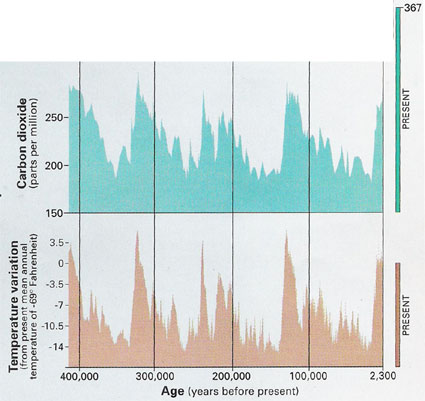
Figure 2. Temperature and carbon dioxide levels. From [3].
Figure 2 illustrates the connection, peaks and falls in temperature are associated with peaks and falls in carbon dioxide levels. But, as pointed out in [1], the carbon dioxide peaks lag behind the temperature peaks by about 800 years, so the temperature changes can't be caused by CO2.
Conversely, rising temperatures can cause a rise in atmospheric CO2 content. The likely reasons are that rising sea temperatures reduce the solubility of CO2 dissolved in the sea, and that higher temperatures mean that old plant material decays more rapidly.
The 'Swindle' program [1] was aired on ABC TV in Australia in 2007, and the presentation was followed by an Australian Forum in which it was discussed by a panel including a few 'climate experts'. One of these was Prof David Karoly, who made two claims, which lead to an interesting question.
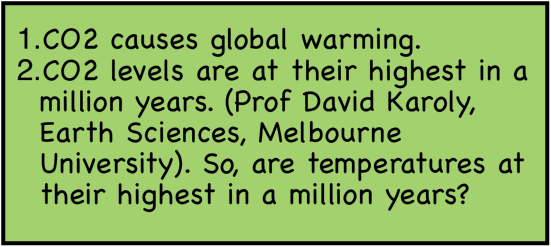
Quotation GRQ4
Of course, the answer to the question is 'No'. This simple observation in itself eliminates any idea that rising CO2 levels cause rising temperatures.
Heat balance in the Earth
Local and average temperatures in the Earth's atmosphere, at its land and sea surfaces, and below these land and sea surfaces, are continuously changing according to dynamic balances between heat input and output.
These inputs and outputs are subject to major variations on a daily basis, as the Earth turns different faces to the Sun, and on a yearly basis, as the Earth's axial tilt exposes different areas preferentially to the Sun, causing the seasons. There are also many other longer-term cycles.
But like any body in space, the Earth has built-in heat adjustment mechanisms. As well as receiving heat, the Earth also radiates heat, from all its surfaces. If the average heat input rises by a tiny amount, temperatures will rise slightly, and the amount of heat radiated off will also rise a little.
This of course rules out one the most alarmist Warming claims, that the Earth could suffer a 'Runaway Greenhouse Effect" where warming factors build up on themselves and get out of control.
Let's look now at some of the most important short-term heat factors.
Day and Night, Tropics and Poles
The most immediate factor we notice, as far as weather is concerned, is the alternation of night and day. The next most immediate factor is our latitude -- where we are between the equator and one of the poles.
The Sun's heat is felt most strongly at midday in the tropics. It is at its least within one of the polar circles at midnight. All the many and complex matters we call weather and climate are largely dependent on the Earth's mechanisms to re-distribute the tropical daytime heat over the rest of the surface, moving heat from the tropics towards the poles.
Of the three mechanisms of heat transfer -- conduction, convection, and radiation -- the one we notice most is convection within the atmosphere. This is the movement of heat by physical transfer of currents of fluid matter, what we call winds.
On the larger scale, these winds will include cyclones, jet streams, and the like. These heat transfer processes occur mostly over times of days to weeks.
Longer-term processes are dependent on seasonal changes and on the sorts of radiation cycles noted previously. Many of them depend on convectional movements, not in the atmosphere, but in the oceans. They typically occur over periods of years to centuries, and are vital in some of the matters to follow.
Heat Capacity of the Earth
We can get another handle on the scale of effects in global temperatures by looking at heat capacities - the abilities of different substances to hold heat energy.
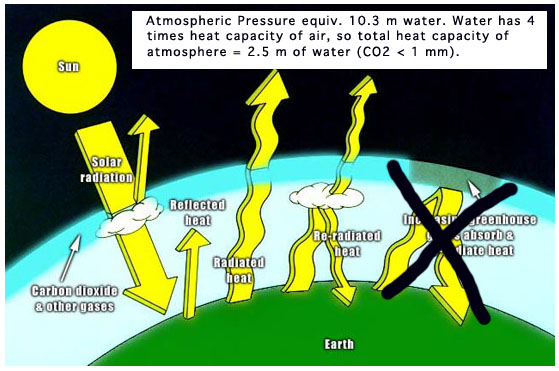
Figure 4. Heat capacity of the atmosphere
Scientists and plumbers, among others, know that the pressure of the atmosphere at sea level is equal to that of a water column around 10.2 metres high -- 34 feet was the old equivalent.
Water has 4 times the heat capacity of air. This means that the total heat capacity of the entire atmosphere is equivalent to that of a layer of water on the surface around 2.5 metres thick.
This simple equivalence gives pause to reflect whether exaggerated stories of the atmosphere heating up and destroying the environment can have much credibility.
When you look at the carbon dioxide content of the atmosphere, at around 0.036 %, this has the heat capacity of a layer of water less than a millimetre thick. Yet there are those who insist that the heat capacity of the man-made part of this, a third of a millimetre, has the capacity to drastically alter the Earth.
Heat capacity of the seas and oceans
In contrast, the average depth of Earth's oceans is around 3.5 kilometres, so the oceans have more than a thousand times the heat capacity of the air. This water, a liquid which can transfer heat by convection, thus totally dwarfs the heat capacity of the atmosphere.
Moreover, sunlight penetrates into the oceans down to a depth of around 100 metres. Penetration of sunlight into solid earth is negligible, and conduction of heat down from overlying warm air is limited.
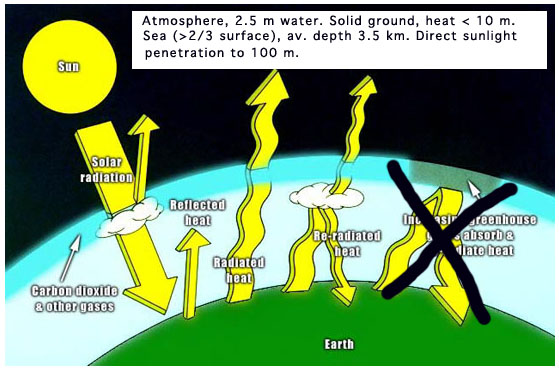
Figure 5. Heat capacity of the seas and oceans
For actual figures, daily variations in temperature at the soil surface are completely ironed out at a depth of 1 metre, and yearly variations don't show up at all below 20 metres [8]. Longer-term temperature variations do penetrate very slowly into the ground, sometimes over centuries, so the soil is a significant reservoir of long-term heat capacity.
In summary, the Earth's atmosphere has potent and rapid mechanisms for heat transfer, via winds, but has little heat storage capacity. The seas and oceans have immense heat storage capacity, and vast, if languid, ability to transfer heat. The soil is capable of responding to long-term temperature fluctuations by storing or releasing heat, but its heat transfer role is negligible.
Something like a Greenhouse
If you happen to watch the maximum and minimum temperatures in London, you may notice that on some days they are the same. The variation over the whole day is less than one degree.
This usually happens when the sky there is completely overcast. A thick layer of cloud prevents the free upward movement of warm air, and there is little wind.
While not the 'Greenhouse Effect' as usually meant, this is a real effect, similar to that in a plant greenhouse.
Temperatures at the surface are more regular under a thick atmosphere than they would be without this, which certainly makes it more feasible for life processes to operate here. On the surface of the Moon, the same distance from the Sun as the Earth, the temperature may change from -150 C at night to +120 C in the day.
This range, of 270 C, is obviously far greater than the day/night range at any point on the Earth, where a daily range of 20 C is unusual.
It could be said that the higher surface temperature of the Earth is just due to the insulating effect of the atmosphere in keeping in this 'internal' heat. If temperatures were measured 1 km below the surface, they would be about 25 C higher, due to the extra insulation of the intervening crust.
The end of the current warming trend
To work out when the current warming trend may end, we need to look at some details of the temperature cycles.
Back around 900 AD, the Vikings embarked on a series of colonizations. They sailed forth and established colonies first on Iceland, then Greenland, and eventually on the northeast coast of North America.
It's obvious that climatic conditions were such that this colonization was feasible. 'Greenland' gained this name from the Vikings because at that time its coast, at least, was green and allowed crops to be grown.
Eventually these balmy climatic conditions, at least as warm as now, fell apart. Really cold times came. In Britain, in 1063, the River Thames in London was frozen over continuously for 14 weeks [11]. Eventually the Greenland colony succumbed to the increasing cold. There are no records of the colony being abandoned, instead it appears that the Greenlanders all perished.
Wind back the clock another 1000 or so years, and you come to the period when the Romans occupied Britain. The Romans brought with them grape vines, growing these and producing wine even in more northerly parts of Britain.
Obviously conditions then were warm enough to allow grapes to grow in the open. It was only from the 1990s onward, that the British climate warmed enough for open-air commercial grape production to become viable.
Bring out the charts
Now we should look at some actual data from current studies, and the conclusions which have drawn from them.
A 2006 newspaper article [12] suggested that the 25-year period up to 2000 AD was probably the hottest, on average, since the 25-year period up to 1000 AD. So there was a temperature peak after 900 AD which was slightly above that occurring today.
So it's just an expression of a long, around 1000-year, cycle. Incidentally, there's nothing to suggest that extra CO2 was being put into the atmosphere before 1000 AD, so CO2 clearly doesn't figure in this.
Figure 9 shows how temperatures varied in the last 1100 years.
These measurements are probably the most sensitive of the methods used, although they are somewhat localized. In this case, the measurements used a selection of non-tropical, northern-hemisphere trees.
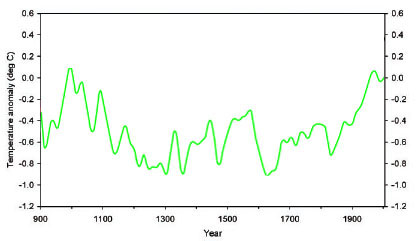
Figure 9. Northern-hemisphere temperature data based on tree rings. Redrawn from [13].
From this figure you can see the temperature peak reached around 1000 AD, followed by falls and rises all below this peak, until in the last 150 years or so temperatures rise again to around the 1000 AD level.
The Gulf Stream
We've seen earlier how ocean currents may have huge heat content and so can influence global climates. At its peak, the Gulf Stream carries 1.4 Petawatts of energy, over a hundred times global energy consumption. Another sobering reminder of the small place of Man at the global level!
Estimates of the heat carried in the Gulf Stream to Western Europe suggest that it raises land temperatures around 6 C above what they would be if it didn't exist.
The waters of the Gulf Stream don't somehow disappear after warming Europe, instead they sink to the ocean floor and move off around the globe in a sinuous, complex cycle. According to Nicolas Cheetham (p. 65 in [15]), this cycle takes around a thousand years. Now that's a familiar number somewhere.
The Arctic ice
Those who study the extent of floating ice in the Arctic are convinced that it is reducing year by year, and many of them think that in the future there will none left at the end of future summers. In fact, there has been a visible reduction in the amount of sea ice, each summer ending with more and more of the previous winter's production gone.
It seems quite possible that the existence of a clear passage, even for part of the year, could alter the flow of the Gulf Stream and its huge heat-distribution load.
Back to the Tree Rings
Figure 11 is the same tree-ring data as in Figure 9, with a simple extrapolation. Data from the drop after the 1000 AD peak has been copied and superimposed (in red) on the present peak.
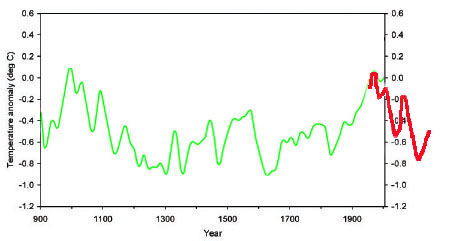
Figure 11. Forecast of temperature drop assuming past pattern repeats.
Now clearly it is unlikely that the previous pattern would be exactly repeated in all details. But it can't be said that it couldn't happen, because last time it did happen.
Wrapping it up -- The science
It's clear that an understanding of the heat capacities of different parts of the environment, and of patterns of heat transfer within and by these, are the key to a real explanation of what's happening with climate.
The question of ice, in glaciers and especially in polar icecaps, is a very important part of this. In a way, this ice is like the pressure relief tank in a car's water circulation system -- both provide a buffer volume where shorter-term fluctuations may be smoothed out.
Ice is especially good in this role. Melting some ice needs a lot of heat -- not only to raise its temperature, but more also to change from solid to liquid. In freezing it, again a lot of energy must be extracted. And the resulting solid stays put, any flow of ice is very slow compared to liquid water.
While the 1000-year temperature cycle may well be driven by changes in solar radiation, the heat storage, transfer, and buffering mechanisms looked at above provide a normally reliable, comfortable jacket for life on Earth, one not available on airless bodies like the moon.
As to world atmospheric CO2 levels, the truth is that, even at the current 0.040 % content, carbon dioxide is only a trace element, eagerly scavenged by plant life in order to carry on the essential photosynthesis processes which make life on this planet work.
Wrapping it up -- Life in the Real World
In 1852 Charles Mackay published the second edition of his book Extraordinary Public Delusions, and the Madness of Crowds [17].
This book deals with some of the great scams, swindles, hoaxes, delusions, and general misconceptions which have taken on general public acceptance in the past. These include the Mississippi Scheme, the South-Sea Bubble, Tulipomania, Alchemy, Witches, and the Slow Poisoning craze of the 1600s. So the Greenzilla Myth is not a new phenomenon.
What is new with Greenzilla is its world-wide coverage, almost certainly only possible because of the 'one-click-away' availability of stuff from the Internet and the all-embracing, immediate, news and phone access.
When the Tulip Mania gripped Holland in the 1600s, with one rare bulb sold for the price of a house, and another highly expensive specimen accidentally cooked and eaten by a sailor who mistook it for an onion, at least the mania was mostly confined to Holland.
And it was not a matter affecting just the idle rich. Mackay says that in 1634, the "rage among the Dutch to possess them was so great that the ordinary industry of the country was neglected, and the population, even to its lowest dregs, embarked in the tulip trade".
So it is now with the Greenzilla Myth. The actions of governments, the budgets of companies and states, are being deflected from rational paths by a myth. Every item in the newspaper has its global warming angle.
There could be a rapid collapse in the Greenhouse myth, it would only take one bold nation to recognise that The Emperor Has No Clothes, and the rest could follow like the collapse of a house of cards.
Or it could be a slow process, waiting for entrenched conservatives to die off or go out of power, as in the wry quotation on scientific acceptance, 'Science advances Funeral by Funeral'.
So then with much of our Society's intellectual and moral capital. A reversal of views on 'Man-made Global Warming' would involve much painful upheaval in budgets, jobs, and research directions, and above all, in loss of face.
Of course, all this could be short-circuited by an unexpectedly quick action by the powers of climate -- not much point in worrying about global warming when the snow and ice are advancing rapidly toward you. But in the absence of this, perhaps the advice of Gandhi on bringing about overdue change might apply.

Quotation Q5
* * * * * * * * * * * * * * * * * *
References and Links
[1]. Martin Durkin. The Great Global Warming Swindle. WAG TV, UK, 2007.
[8]. Temperature At and Below the Earth's Surface.
http://esrc.stfx.ca/borehole/node6.html .
[11]. Thames frozen over for 14 weeks in 1063. http://www.londononline.co.uk/history/norman/4 .
[12]. Hottest since 900 AD. Sunday Times (Perth), 2006 Jun 25.
[13]. Surface Temperature Reconstructions for the Last 2000 Years. National Academy of Sciences, Washington, 2006. Online at www.uoguelph.ca/~rmckitri/research/NRCreport.pdf .
[15]. Earth. Smith-Davies Publishing, London, 2005.
[17]. Charles Mackay. Extraordinary Public Delusions, and the Madness of Crowds. Facsimile of the 1852 edition. Farrar, Straus and Giroux. New York, 1932.
"XT809 - The Greenhouse Effect does not exist" is an extract from "EP301: Will Greenzilla Destroy the Earth?" .
Go to the Extracts Home Page. (You can leave a comment on any Extracts item there).
Go to the AOI Home Page
Version 1.0 placed on Web 2017 Mar 9.










